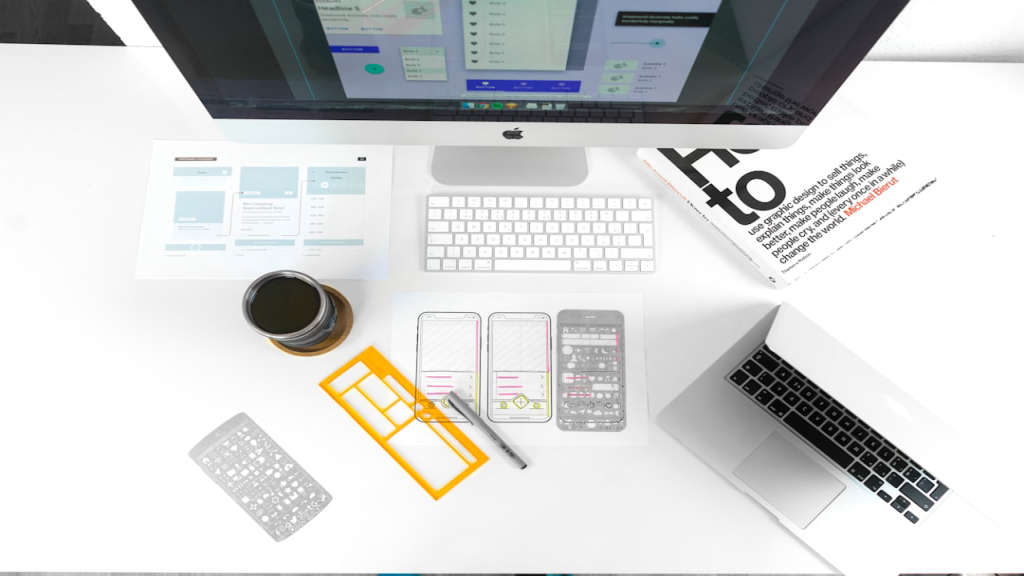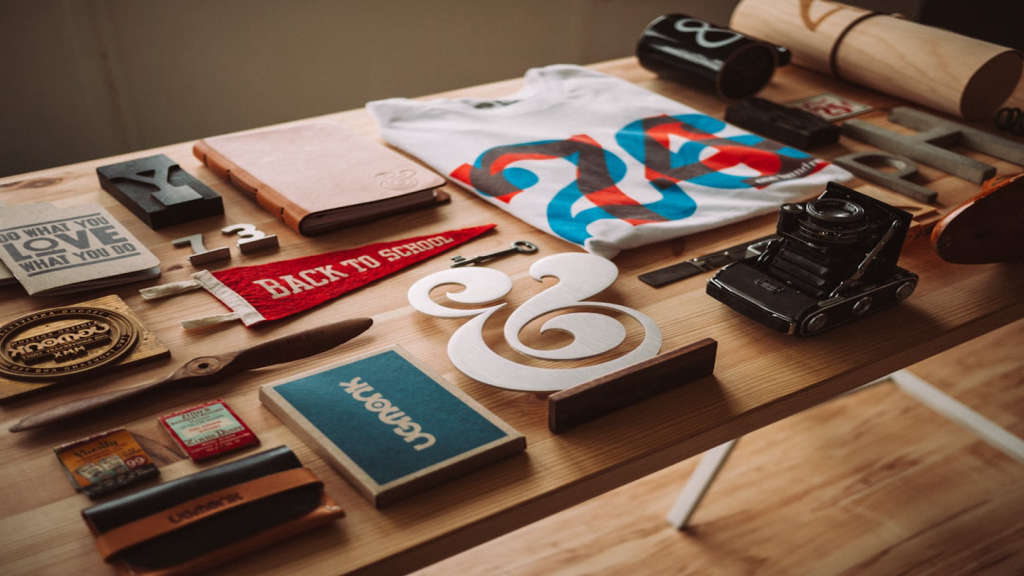
Typography is an art form that can truly make or break a design. Mastering typographic excellence is essential for designers who want to create eye-catching and impactful visuals. In this blog article, we will explore some tips and tricks to help you elevate your typography game and create stunning designs that stand out.
Main Points
- Typography Tips and Tricks: Learn how to use fonts, spacing, and alignment to create visually appealing designs.
- 2024 Graphic Design Trends: Stay ahead of the curve with the latest trends in typography and design.
- Future of Graphic Design 2024: Explore what the future holds for typography and how you can incorporate these trends into your work.

The Art of Selecting the Right Fonts
When it comes to graphic design, selecting the right fonts can make all the difference in the world. Fonts are not just letters on a page; they convey a message, set a tone, and create a visual identity. Here are some tips on how to master the art of selecting the right fonts:
1. Understand the Message You Want to Convey
Before choosing a font, understand the message you want to convey. Is it bold and attention-grabbing, or subtle and elegant? The font you choose should complement the message you want to send.
2. Consider Readability
Readability is key when selecting a font. Make sure the font is easy to read, especially when it comes to longer texts. Avoid overly decorative fonts that can distract from the message.
3. Pay Attention to Font Pairing
Pairing fonts is an art in itself. Matching fonts that complement each other can enhance the visual appeal of your design. Choose a combination of fonts that work well together, such as a serif font for headings and a sans-serif font for body text.
4. Test Different Options
Don’t be afraid to experiment with different fonts. Test out a few options to see which one works best for your design. Consider factors like font size, weight, and style to find the perfect fit.
5. Stay on Top of Trends
Graphic design trends are constantly evolving. Stay updated on the latest font trends and incorporate them into your designs. Be mindful of new font styles and techniques that can help elevate your work.
- Understanding the message is crucial when selecting fonts: Make sure the font matches the overall tone of your design.
- Readability should be a top priority: Choose a font that is easy to read, especially for longer texts.
- Font pairing can make a huge difference: Experiment with different font combinations to enhance your design.
- Testing out different options is essential: Don’t settle for the first font you find – try out a few to see what works best.
- Stay updated on font trends: Incorporate the latest font styles and techniques into your designs to stay ahead of the curve.

Hierarchy and Typography: Creating Visual Structure
When it comes to creating visually appealing content, hierarchy and typography play a crucial role in establishing a clear and structured design. By utilizing different font sizes, styles, and weights, along with strategic placement, designers can effectively guide the viewer’s eyes and emphasize important information. In this article, we will explore how hierarchy and typography work together to create visual structure that enhances the overall readability and impact of your content.
Understanding Hierarchy
Hierarchy refers to the organization of content in a way that shows the relative importance of each element. By establishing a clear hierarchy, designers can lead the viewer through the content in a logical order, starting with the most important information and moving down to the secondary and tertiary details. This helps the viewer quickly grasp the key points of the content and navigate through it with ease.
The Role of Typography
Typography plays a significant role in establishing hierarchy by using different fonts, sizes, and styles to differentiate between various levels of information. For example, headings are often displayed in a larger and bolder font to indicate their importance, while body text is usually smaller and lighter to provide supporting details. By carefully choosing typography elements, designers can create a visual hierarchy that guides the viewer’s attention and enhances the overall readability of the content.
| Title | Font Size | Font Weight |
|---|---|---|
| Main Heading | 36px | bold |
| Subheading | 24px | bold |
| Body Text | 16px | regular |
By combining hierarchy and typography effectively, designers can create visually engaging content that is easy to navigate and understand. Whether you are designing a website, a marketing campaign, or a print publication, applying principles of hierarchy and typography will help you create a cohesive and visually appealing design that delivers your message clearly and effectively.

Playing with Typographic Scale and Proportion
Typography is an art form that goes beyond just choosing a font. It’s about playing with scale and proportion to create visually appealing designs that capture the reader’s attention.
Experimenting with Scale
One way to create dynamic and engaging typography is by experimenting with different scales. By using a variety of font sizes, you can create hierarchy and emphasis within your design. For example, using a larger font size for headlines and a smaller font size for body text can help guide the reader’s eye through the content.
Playing with Proportion
Proportion is also key when it comes to typography. By adjusting the spacing between letters, words, and lines, you can create visually pleasing compositions that are easy to read. A good typographic proportion can make a design look polished and professional.
Overall, playing with typographic scale and proportion can take your designs to the next level. By experimenting with different sizes and spacing, you can create visually appealing layouts that draw the reader in and make your content stand out.
Understanding Kerning and Leading for Improved Readability
Typography plays a crucial role in enhancing the readability of a text. Two key elements in typography that significantly impact how text is perceived are kerning and leading. Understanding the concepts of kerning and leading can help improve the overall readability and aesthetics of your design.
Kerning
Kerning refers to the spacing between individual letters in a word. Proper kerning ensures that each letter flows smoothly into the next, creating a visually appealing and balanced text. When adjusting kerning, it is important to pay attention to letter pairs that may look awkward or uneven, such as AV, To, or WA. By adjusting the spacing between these problematic pairs, you can improve the overall readability of your text.
Leading
Leading is the vertical spacing between lines of text. Proper leading is crucial in preventing lines of text from feeling too cramped or crowded, making it easier for readers to follow along. When adjusting leading, consider the typeface and size of the text to determine the optimal spacing. Increasing leading can help improve legibility, especially in longer blocks of text.
Why Kerning and Leading Matter
By paying attention to kerning and leading, you can significantly improve the readability of your text. Properly adjusted kerning and leading can make a design look more professional and polished, enhancing the overall user experience. Inconsistent kerning or leading can make text difficult to read and negatively impact the design’s aesthetics.
Conclusion
Understanding the importance of kerning and leading in typography is essential for creating visually appealing and easy-to-read text. By mastering the art of kerning and leading, you can elevate the quality of your design and ensure that your message is communicated effectively to your audience.
Utilizing Typography to Enhance User Experience
In the world of design, typography plays a crucial role in enhancing user experience. Typography goes beyond just selecting a font type or size; it involves the art and science of arranging type to make written language readable and appealing. By utilizing typography effectively, designers can create a visual hierarchy that guides the user’s eye and conveys the intended message clearly.
The Power of Typography
Typography has the power to evoke emotions, create a sense of hierarchy, and establish brand identity. The font choices, spacing, and alignment all contribute to the overall readability and aesthetic of a design. With the right typography, a website or app can become more intuitive and engaging for users.
Key Considerations
When choosing typography for a project, designers must consider three important factors: legibility, readability, and hierarchy. Legibility refers to how easily one can distinguish individual letters, while readability focuses on how easily one can read long passages of text. Establishing a clear hierarchy with heading styles, font weights, and sizes helps users navigate the content efficiently.
Typography is not just about choosing pretty fonts; it is an essential aspect of design that can significantly impact user experience. By prioritizing legibility, readability, and hierarchy, designers can create visually appealing and user-friendly designs that resonate with audiences.
Avoiding Common Typographic Mistakes in Design
Typography plays a crucial role in the success of any design project. It is important to pay attention to the details and avoid common typographic mistakes that can detract from the overall impact of your design. Here are some tips to help you create more polished and professional designs:
1. Proper Kerning and Tracking
One common typographic mistake is improper kerning and tracking. Kerning refers to the spacing between individual letters, while tracking refers to the overall spacing between all the letters in a word or block of text. It is important to adjust these settings to ensure that the text is visually appealing and easy to read.
2. Choosing the Right Fonts
Another mistake designers often make is using too many different fonts in a single design. This can create a cluttered and chaotic look. Instead, choose a few complementary fonts that work well together and vary their weights and styles to create visual interest.
3. Alignment and Consistency
Alignment and consistency are key principles in typography. Make sure that your text is aligned correctly and that there is a sense of visual order in your design. Consistent use of font sizes, styles, and colors will help create a cohesive look.
“Typography is the craft of endowing human language with a durable visual form.”
In conclusion, paying attention to typography is essential in design. By avoiding common typographic mistakes and following these tips, you can create more visually appealing and professional designs that effectively communicate your message to your audience.
Conclusion
In conclusion, mastering the art of typography is crucial for creating visually appealing designs. By following these Typography Tips and Tricks, you can elevate your designs and make them stand out from the crowd. Remember to experiment with different fonts, sizes, and spacing to find the perfect balance for your projects. With practice and persistence, you’ll soon become a typography pro.
Frequently Asked Questions
What are some common typography terms?
Some common typography terms include serif, kerning, leading, and alignment.
How can typography affect the readability of a text?
Typography can affect readability through factors like font choice, size, spacing, and contrast.
Why is typography important in design?
Typography is important in design because it conveys the overall aesthetic, mood, and message of a piece.
What is the difference between serif and sans-serif fonts?
Serif fonts have decorative strokes at the ends of characters, while sans-serif fonts do not have these strokes.
How can I improve my typography skills?
You can improve your typography skills by studying typefaces, practicing layout design, and paying attention to details like spacing and hierarchy.
